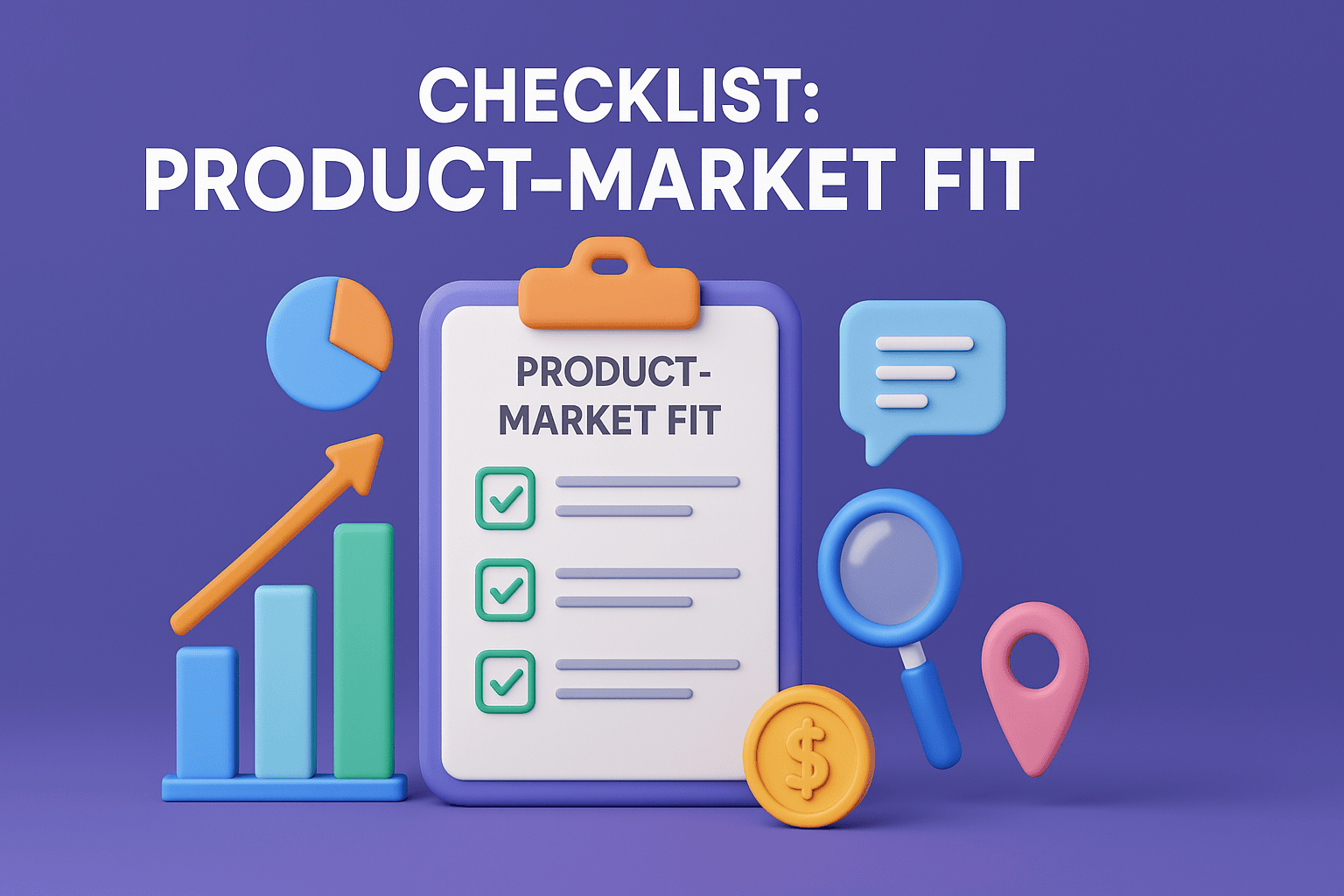
Achieving product-market fit (PMF) is crucial for any business striving for sustainable growth and long-term success. It signifies that a product resonates deeply with its target audience, solving their problems or fulfilling their needs in a way that drives customer satisfaction, repeat purchases, and brand advocacy. When a product reaches market fit, marketing efforts become more efficient, resource allocation improves, and business growth accelerates. PMF not only enhances the effectiveness of marketing strategies but also streamlines operations, allowing businesses to scale with greater ease while maximizing the impact of their resources. Understanding whether your product has truly achieved market fit is essential for making informed decisions and driving continued success. Below is a comprehensive checklist to help you evaluate whether your product has achieved market fit.
Qualitative Indicators
1. Customer Acquisition and Retention
Questions to Consider:
Are customers paying for your product, and are they coming back for more?
Are you seeing a consistent flow of new customers?
Are existing customers renewing their subscriptions or making repeat purchases?
2. Word-of-Mouth
Questions to Consider:
Are customers referring friends and family to your product?
Are you seeing an increase in organic traffic and social media buzz as a result of customer advocacy?
3. Customer Feedback
Questions to Consider:
Are customers praising your product’s features, user experience, and support?
Are you receiving low complaint rates and high satisfaction scores?
Quantitative Metrics
1. Daily and Monthly Active Users (DAU/MAU)
Questions to Consider:
Are DAU and MAU increasing consistently?
Are you seeing a high percentage of users returning to your product daily or weekly?
2. Conversion Rate
Questions to Consider:
What percentage of leads are converting into paying customers?
Is your conversion rate consistently above 2-3%?
Are you optimizing and improving conversion rates over time?
3. Customer Retention Rate
Questions to Consider:
What percentage of customers are returning to your product over time?
Are you seeing a retention rate above 75-80%?
Are you identifying and addressing reasons for customer churn?
4. Lifetime Value (LTV) to Customer Acquisition Cost (CAC) Ratio
Questions to Consider:
Is your LTV at least 2.5-3 times higher than your CAC?
Are you generating sufficient revenue from each customer to justify acquisition costs?
Are you optimizing pricing, upselling, and cross-selling to increase LTV?
5. Referral Score (Net Promoter Score)
Questions to Consider:
Are customers likely to recommend your product to others?
Are you seeing a high NPS score (above 30-40)?
Are customers actively promoting your product to others?
Red Flags
1. Low Customer Acquisition and Retention Rates
- Are you seeing low conversion rates, high churn rates, or stagnant growth?
2. Negative Customer Feedback
- Are customers complaining about missing features, poor user experience, or inadequate support?
3. High Customer Acquisition Costs (CAC)
- Are you seeing high CAC, low conversion rates, or inefficient marketing channels?
Action Items
1. Gather Customer Feedback
- Collect feedback through surveys, interviews, and support channels to better understand customer needs, pain points, and satisfaction.
2. Analyze Quantitative Metrics
- Track key metrics such as DAU/MAU, conversion rates, retention rates, LTV/CAC ratio, and NPS to identify areas for improvement.
3. Iterate and Refine
- Use customer feedback and quantitative insights to iterate and refine your product, marketing strategy, and pricing model.
4. Monitor Progress
- Continuously track your progress towards achieving PMF, adjusting your strategies as needed, and staying focused on customer satisfaction and growth.
This checklist offers a practical framework for assessing product-market fit using both qualitative insights and quantitative metrics, helping you ensure your product aligns with customer needs and is positioned for sustainable growth. Disclaimer: While every effort has been made to ensure accuracy and clarity, the content may contain formatting or contextual nuances that vary by business type. Business outcomes may differ, and users are advised to critically evaluate and adapt the checklist to their specific context before applying it.